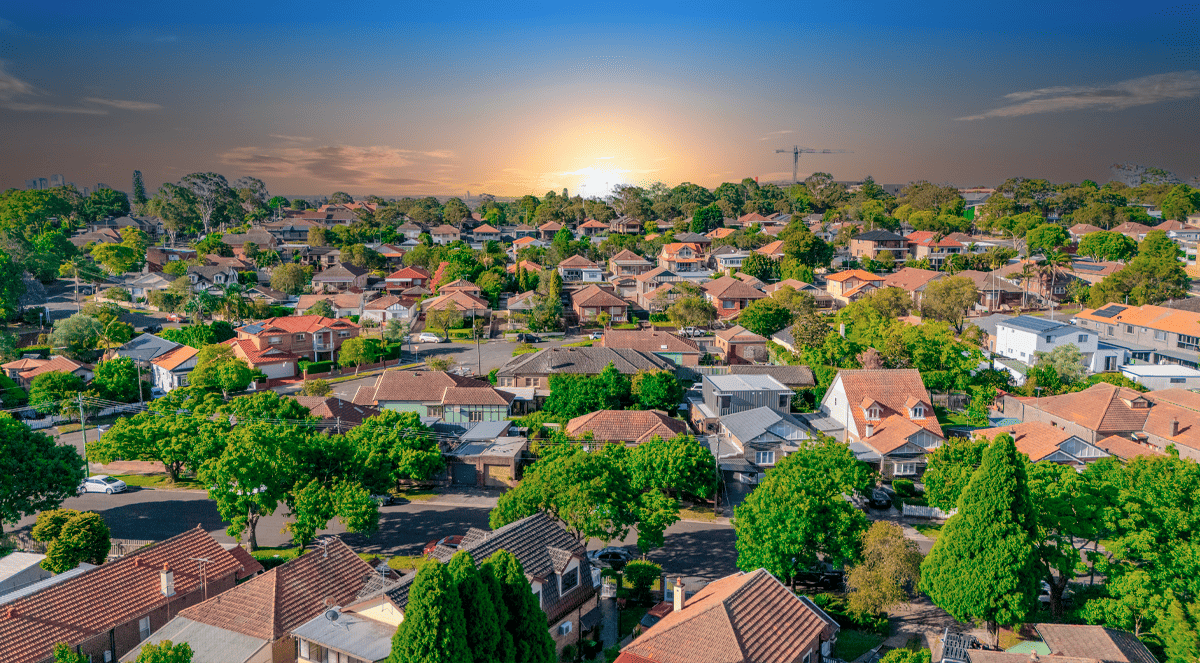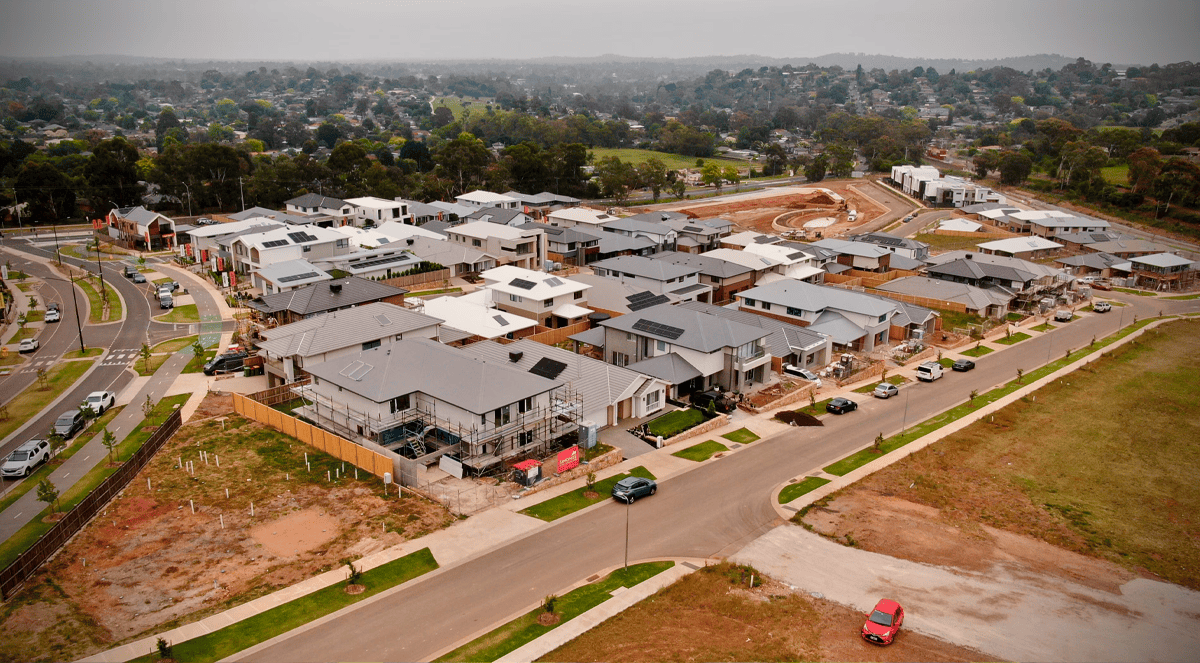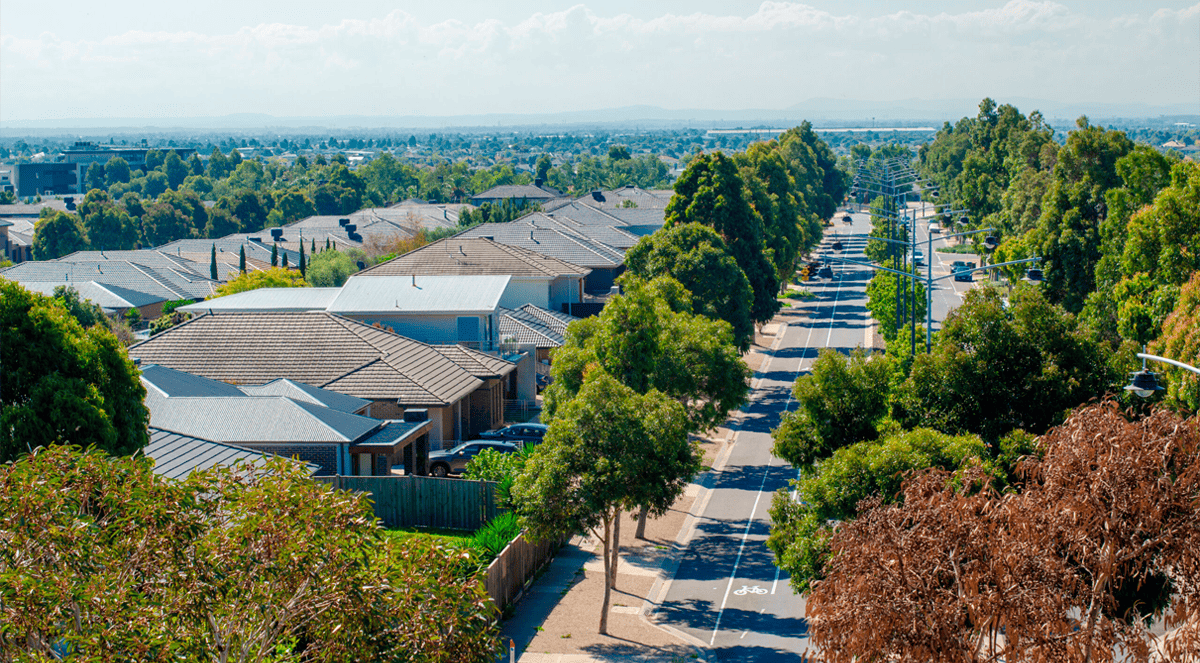Features > Property News & Insights > Market updates
What impact do natural disasters have on property prices?
.png)
KEY POINTS
- Natural disasters often lead to short-term price impacts on residential property, although prices typically recover
- Insurance costs and availability are becoming increasingly important factors in property values, particularly in high-risk areas
- Government investment in disaster mitigation impacts long-term property values, while demographic and wealth factors create uneven community recovery patterns
More than a fortnight after it made landfall, communities along Australia’s east coast are continuing to count the cost of the damage to homes, businesses and infrastructure caused by ex-Tropical Cyclone Alfred.
Although the powerful weather system - at one stage a Category 4 cyclone - weakened to a tropical low before crossing the coast and spared Brisbane from a direct hit, it nevertheless brought extensive flooding to large areas of coastal Queensland and northern New South Wales.
On the 17th of March, the Insurance Council of Australia reported that insurance companies had so far received more than 63,000 claims as a result of the weather event, while the Federal government has estimated Alfred has caused a $1.2 billion hit to the national economy.
At least one person is known to have died as a direct result of the flooding caused by the storm system.
In just one Queensland town - Hervey Bay - 1,600 properties and businesses were affected when almost 400 millimetres of rain fell in a matter of hours.
With climate scientists predicting that many of the areas ravaged by Cyclone Alfred are likely to see more of these types of extreme weather events, the question arises as to what kind of impact natural disasters have on property values?
Surprisingly, the answer appears to be very little, although there is some evidence that it is changing in areas repeatedly hit by natural disasters.
The details
Nerida Conisbee, the Chief Economist at real estate giant Ray White, recently penned an economic update for property owners and investors, where she concluded that the “relationship between natural disasters and property values is more nuanced than many might expect, shaped by factors ranging from demographics to wealth disparities.
“The impact is complex and often counterintuitive,” she says.

Nerida Conisbee, Chief Economist, Ray White. Image from ABC News
As an example, she cites research from the University of New South Wales, which examined the impacts of the 2019-2020 Black Summer bushfires in the Greater Sydney area.
The study found that properties in bushfire-prone areas experienced price drops of 6-24% in areas like Hawkesbury, while the Blue Mountains saw smaller declines of 0.2-5.2%.
However, Ms Conisbee notes these impacts were temporary, with most markets recovering within 12-24 months.
“This pattern of short-term impact followed by recovery appears consistent across different types of natural disasters and locations,” she says.
As another example, she says that Brisbane suburbs affected by floods in 2011 initially saw value declines.
However, by 2017, these same suburbs were achieving median prices well above their pre-flood levels.
Mallacoota in eastern Victoria provides another interesting case study.
The isolated town was devastated by the 2020 bushfires.
It then saw house prices surge 70% in just three years, driven significantly by COVID-era population movements to regional areas.
Ray White’s Nerida Conisbee says the speed and extent with which areas affected by a natural disaster recover often depends on several key factors.
These include insurance coverage, as “areas with higher rates of insurance coverage tend to recover more quickly, as residents have the financial means to rebuild.
“This creates a wealth disparity in disaster recovery,” she says, “with more affluent areas often bouncing back faster.”
Then there’s demographics.
“Research suggests older residents are often more willing to remain in fire-prone areas, potentially due to stronger community ties and longer-term property ownership.”
Government investment is another factor, with regions that receive substantial funds for disaster mitigation infrastructure, such as flood levees, fire breaks, and enhanced emergency response systems, tending to experience stronger price recoveries.
And finally, there’s what Ms Conisbee calls “Location Desirability”.
“Perhaps counterintuitively, many high-risk areas continue to command premium prices despite the threats they face,” she says.
“Riverside properties, coastal homes, and bush retreats often maintain their appeal due to lifestyle benefits that, for many buyers, outweigh the risks.
“Recent Climate Valuation data highlights this dynamic, showing that even in areas where over 80% of properties are at high risk of being uninsurable for flooding, most still experienced above-average price growth over the past five years.
“This suggests buyers may be underweighting long-term climate risks in their purchase decisions,” she says.
However, Ms Conisbee notes an emerging trend showing that the market impact of disasters isn't uniform across all parts of Australia.
“Queensland, for instance, has shown more price sensitivity to flood risk, possibly due to repeated major flooding events creating greater risk awareness among buyers,” she says.
“This regional variation suggests that frequent exposure to disasters may eventually influence buyer behaviour more significantly than isolated events.”
Looking to the future, Nerida Conisbee highlights the role of soaring insurance premiums.
“Properties with features that reduce insurance costs may begin commanding premium prices, while properties facing insurance challenges could see values impacted,” she says.
“As climate-related risks continue to evolve, property markets will likely become more sophisticated in pricing these risks.
“However, the enduring appeal of high-risk locations suggests that lifestyle factors will continue to compete with safety considerations in driving property values,” Ms Conisbee says.
Stay Up to Date
with the Latest Australian Property News, Insights & Education.




.png?width=292&height=292&name=Copy%20Link%20(1).png)
 SIGN UP FOR FREE NEWSLETTER
SIGN UP FOR FREE NEWSLETTER





.jpg?width=1920&height=1080&name=Warning%2c%20You%20Might%20Be%20Facing%20Higher%20Taxes%20Soon%20(1).jpg)





.png?width=1920&height=1080&name=Rate%20Drops%20Signal%20BIGGEST%20Property%20Boom%20in%20DECADES%20(1).png)

.jpg?width=1920&height=1080&name=Labor%20vs%20Liberal%20These%20Housing%20Policies%20Could%20Change%20the%20Property%20Market%20Forever%20(1).jpg)
.jpg?width=1920&height=1080&name=QLD%20Slashes%20Stamp%20Duty%20Big%20News%20for%20Investors%20%26%20Home%20Buyers%20(1).jpg)
.jpg?width=1920&height=1080&name=Trump%20Just%20Slapped%20Tariffs%20%E2%80%93%20Here%E2%80%99s%20What%20It%20Means%20for%20Australia%20(1).jpg)
.jpg?width=1920&height=1080&name=Federal%20Budget%202025%20More%20Debt%2c%20No%20Housing%20%E2%80%93%20Here%E2%80%99s%20What%20You%20Need%20to%20Know%20(1).jpg)
.jpg?width=1920&height=1080&name=Australias%20Housing%20Crisis%20is%20about%20to%20get%20MUCH%20Worse%20(New%20Data%20Warns).jpg)
%20(1).jpg?width=1920&height=1080&name=Australias%20RENTAL%20CRISIS%20Hits%20ROCK%20BOTTOM!%20(2025%20Update)%20(1).jpg)
%20(1).png?width=1920&height=1080&name=Is%20Adelaide%20Still%20a%20Good%20Property%20Investment%20(2025%20UPDATE)%20(1).png)
.jpg?width=1920&height=1080&name=RBA%20Shocks%20with%20Rate%20Cuts!%20What%E2%80%99s%20Next%20for%20Property%20Investors%20(1).jpg)
%20(1).jpg?width=1920&height=1080&name=I%20Predict%20The%20Feb%20Rate%20Cut%20(My%20Price%20Growth%20Prediction)%20(1).jpg)
.png?width=1920&height=1080&name=Why%20Property%20Prices%20Will%20Rise%20in%202025%20Market%20Predictions%20(1).png)
.jpg?width=1920&height=1080&name=Why%20Investors%20Are%20Choosing%20Apartments%20Over%20Houses%202%20(1).jpg)
.jpg?width=1920&height=1080&name=Why%20Rate%20Cuts%20Will%20Trigger%20A%20Property%20Boom%20(1).jpg)
.jpg?width=1920&height=1080&name=Retire%20On%202Million%20With%20One%20Property%20(Using%20SMSF).jpg)
.jpg?width=1920&height=1080&name=4%20Reasons%20Why%20You%20Should%20Invest%20in%20Melbourne%20Now%20(1).jpg)
%20(1).jpg?width=1920&height=1080&name=Old%20Property%20vs%20New%20Property%20(Facts%20and%20Figures%20Revealed)%20(1).jpg)
%20(1).jpg?width=1920&height=1080&name=Will%20The%20New%20QLD%20Govt%20Create%20a%20Property%20Boom%20or%20Bust%20(My%20Prediction)%20(1).jpg)
%20Scott%20Kuru%20(1).jpg?width=1920&height=1080&name=Inflation%20Hits%20Three-Year%20Low%20(Will%20RBA%20Cut%20Rates%20Soon)%20Scott%20Kuru%20(1).jpg)
.jpg?width=1920&height=1080&name=How%20to%20Buy%20Investment%20Property%20Through%20SMSF_%20The%20Ultimate%20Guide%20(1).jpg)
.jpg?width=1920&height=1080&name=Victoria%20Slashes%20Stamp%20Duty%20Melbourne%20Set%20to%20Boom%20Scott%20Kuru%20(1).jpg)
.png?width=1571&height=861&name=Are%20Foreign%20Buyers%20Really%20Driving%20Up%20Australian%20Property%20Prices%20(1).png)
.jpg?width=1920&height=1080&name=The%20Single%20Factor%20That%20Predicts%20Property%20Growth%20Regions%20(1).jpg)
%20Scott%20Kuru%20(1).jpg?width=1920&height=1080&name=My%20Prediction%20On%20Rates%20%26%20Negative%20Gearing%20(Market%20Crash)%20Scott%20Kuru%20(1).jpg)

-1.png?width=1920&height=1080&name=Major%20Banks%20Cut%20Rates%20Will%20RBA%20Follow%20Suit%20(Sept%20Rate%20Update)-1.png)
%20Scott%20Kuru-1.png?width=1920&height=1080&name=Rate%20Cut%20Coming%20What%20New%20Zealands%20Move%20Means%20for%20Australia%20(Sept%20Prediction)%20Scott%20Kuru-1.png)
%20(1).jpg?width=1920&height=1080&name=Buy%20when%20the%20interest%20rates%20are%20high!%20(Why%20you%20must%20buy%20now!)%20(1).jpg)
.jpg?width=1920&height=1080&name=Carms_Revised%20Taxes%20Due%20Aug%209%20YT%20Thumbnail02%20(1).jpg)
.jpg?width=1920&height=1080&name=Carms_Too%20Little%20Too%20Late%20Aug%207%20YT%20Thumbnail01%20(1).jpg)









.jpg?width=1920&height=1080&name=Carms_Rate%20Drop%20In%20July%20Jun%2010%20YT%20Thumbnail02%20(1).jpg)
.jpg?width=1920&height=1080&name=Carms_Own%20a%20Property%20V6%20Jun%205_YT%20Thumbnail%20(1).jpg)









.png?width=1920&height=1080&name=Artboard%201%20(3).png)






.jpg?width=1920&height=1080&name=YT%20thumbnail%20%20(1).jpg)

